By the mid 1870s, Carolus-Duran had established himself as a portrait painter in Paris, and in 1874-75 had his first solo show at the Cercle des Mirlitons.

Carolus-Duran was the right painter, in the right city, at the right time to paint a succession of rich and upwardly mobile women. Among his early stars was his Portrait of Mademoiselle de Lancey (1876), which he exhibited in the Salon the following year, where she became known as ‘the lady with the red cushion’. Most of those who attended that Salon knew only too well who she was: one of the great courtesans of the Belle Epoque.
She was born Julia Tahl, in Baltimore, MD, in 1851. When she arrived in Paris, she quickly arranged to attend soirées, and led a wild life, with a succession of rich lovers. The scarlets and crimsons and her direct wide-eyed gaze at the viewer left little to the imagination, and the critics were merciless with Carolus-Duran. But a little notoriety, and such a wonderful painting, were not a bad thing at all for the artist.

Portrait of Madame Henry Fouquier (1876) is a much more conventional painting of the wife of Henry Fouqier, a journalist who lived from 1838-1901.

Portrait of a Red-Haired Woman (1876) is quite a different type of portrait, probably painted of a close friend. From the date it is possible that this may have been of Victorine Meurent (1844-1927), who modelled for Édouard Manet and others, and was a painter in her own right.
In 1876, Carolus-Duran visited Russia.
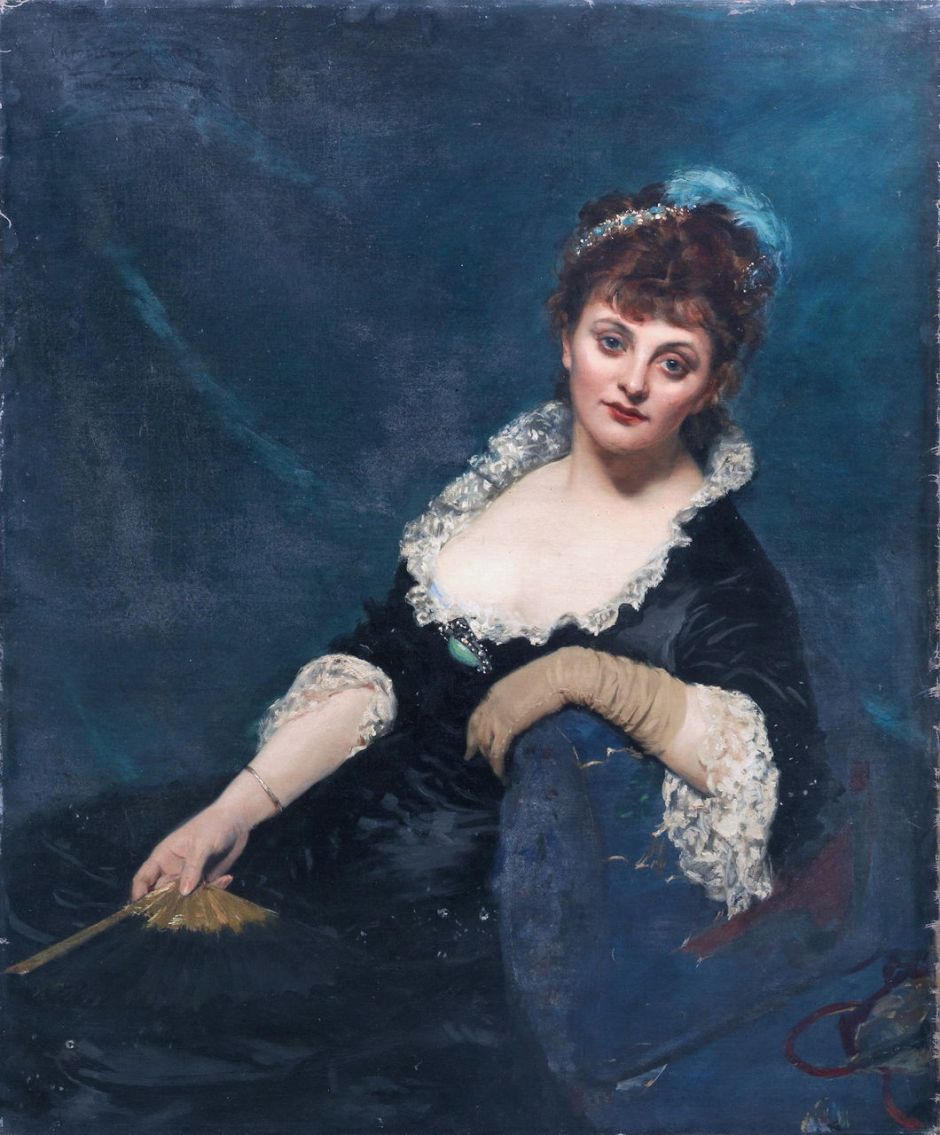
Portrait of Mrs Harry Vane Milbank (1877) shows Alice Sidonie Van den Bergh, a woman with a very unusual background. Born in Brussels, she first married the Marquis Edward Charles de Belleroche, who was living in Britain. When he died in 1867, the family moved to Paris, where in 1871 she married Harry Vane Milbank (1848-1892), a former officer in the Royal Horse Guards who had no money. Her son (by de Belleroche) was Count Albert de Belleroche, who is sometimes known as the French John Singer Sargent, although today he has almost been forgotten.
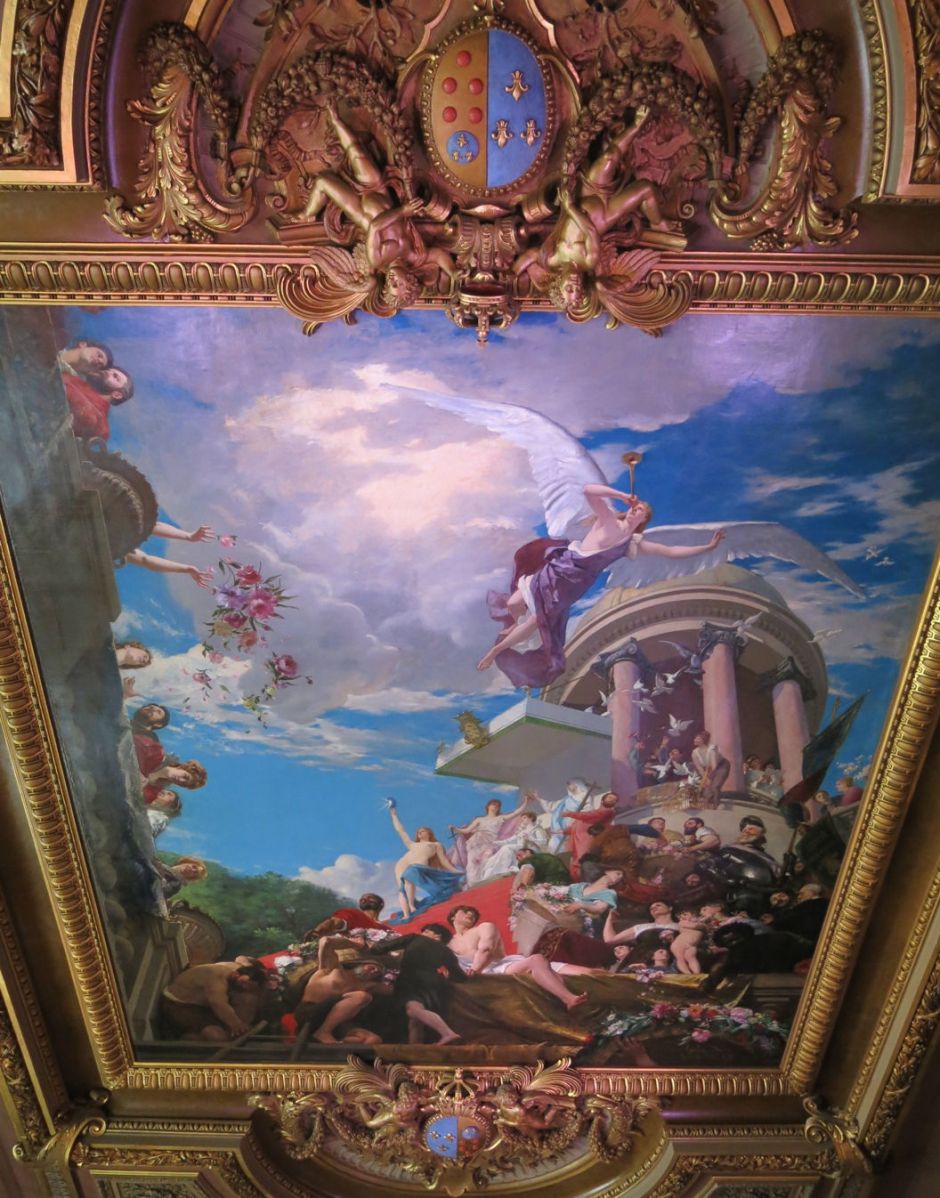
It is sometimes said that Carolus-Duran only painted portraits after about 1870, but that is not accurate. He was commissioned to paint this startling ceiling decoration for the Palais du Luxembourg in Paris, which shows The Glorification of Maria de’ Medici (1878). She had been the second wife of King Henry IV of France, and lived from 1575-1642. A noted patron of the arts, the Palais du Luxembourg had been built and furnished for her, with Rubens as her court painter, and his famous cycle of paintings there one of his greatest commissions.
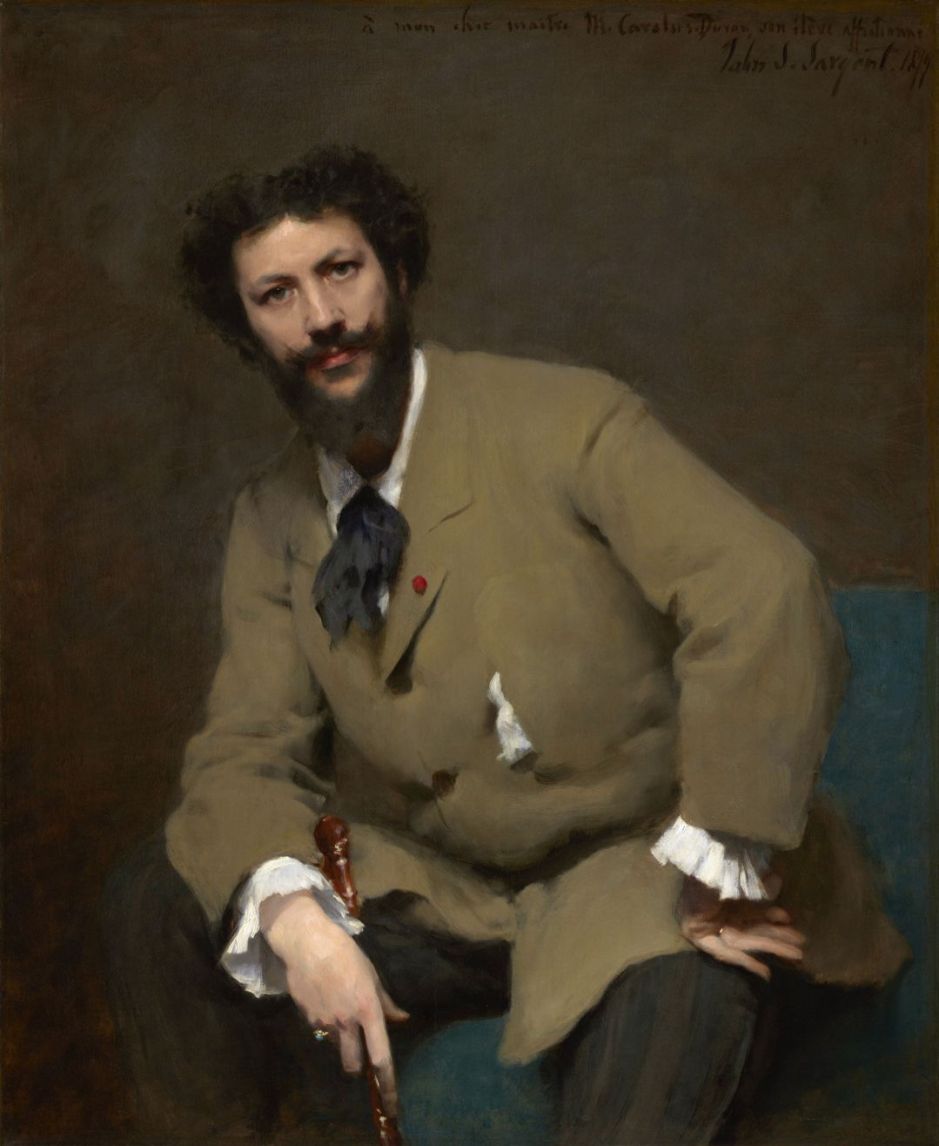
John Singer Sargent’s famous Portrait of Carolus-Duran (1879) is not only his personal tribute to his teacher, but when it was shown at the Salon proved the foundation of Sargent’s own career as a portraitist.
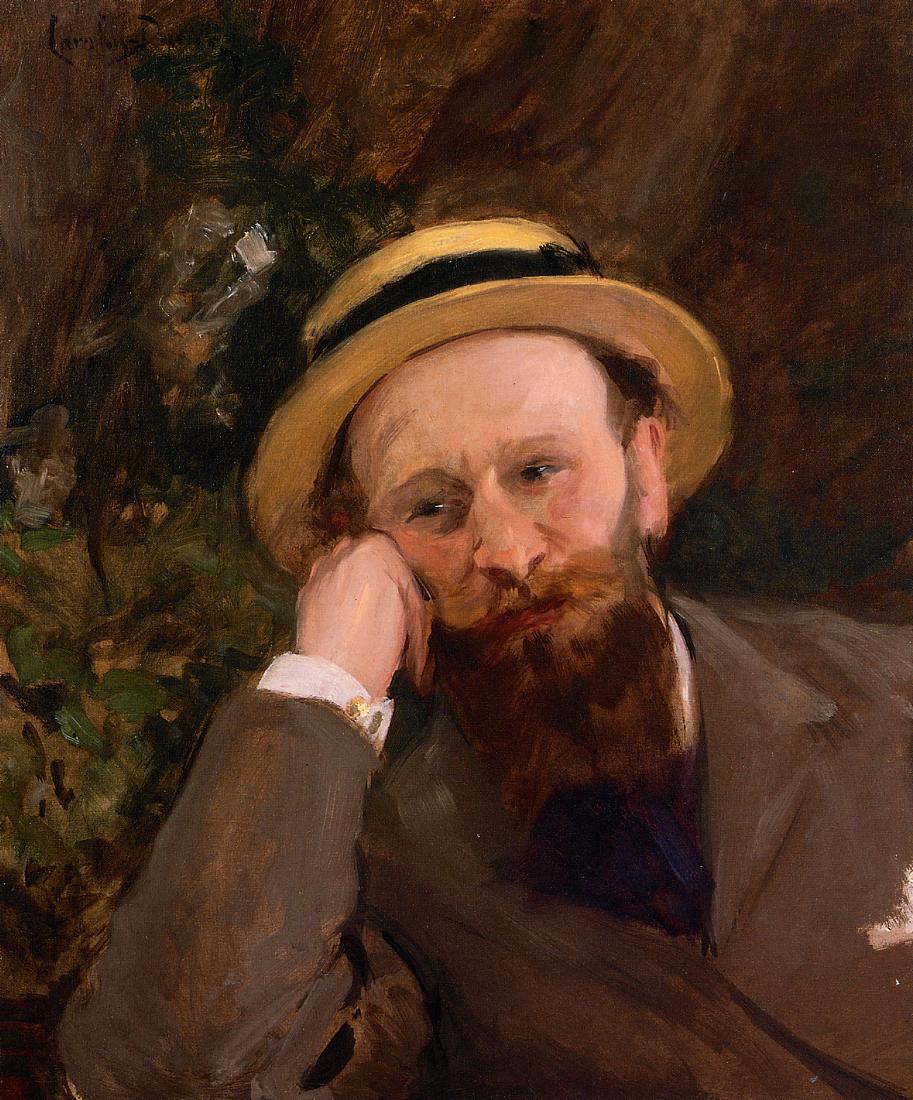
Portrait of Édouard Manet of about 1880 is probably the most famous and finest portrait of Manet in his later years; he died in 1883.

Portrait of Queen Maria Pia of Portugal (1880) shows Dona Maria Pia of Savoy (1847-1911), who was the wife of King Luis I of Portugal. Along with the rest of the Portuguese royal family, she left for exile in 1910, and died in Italy the following year.

Vision (1883) appears to be a fairy-fantasy scene, perhaps used as a vehicle for his figurative painting.
In 1890, he was a founder-member of the second Société Nationale des Beaux-Arts, and was elected its president in 1900.
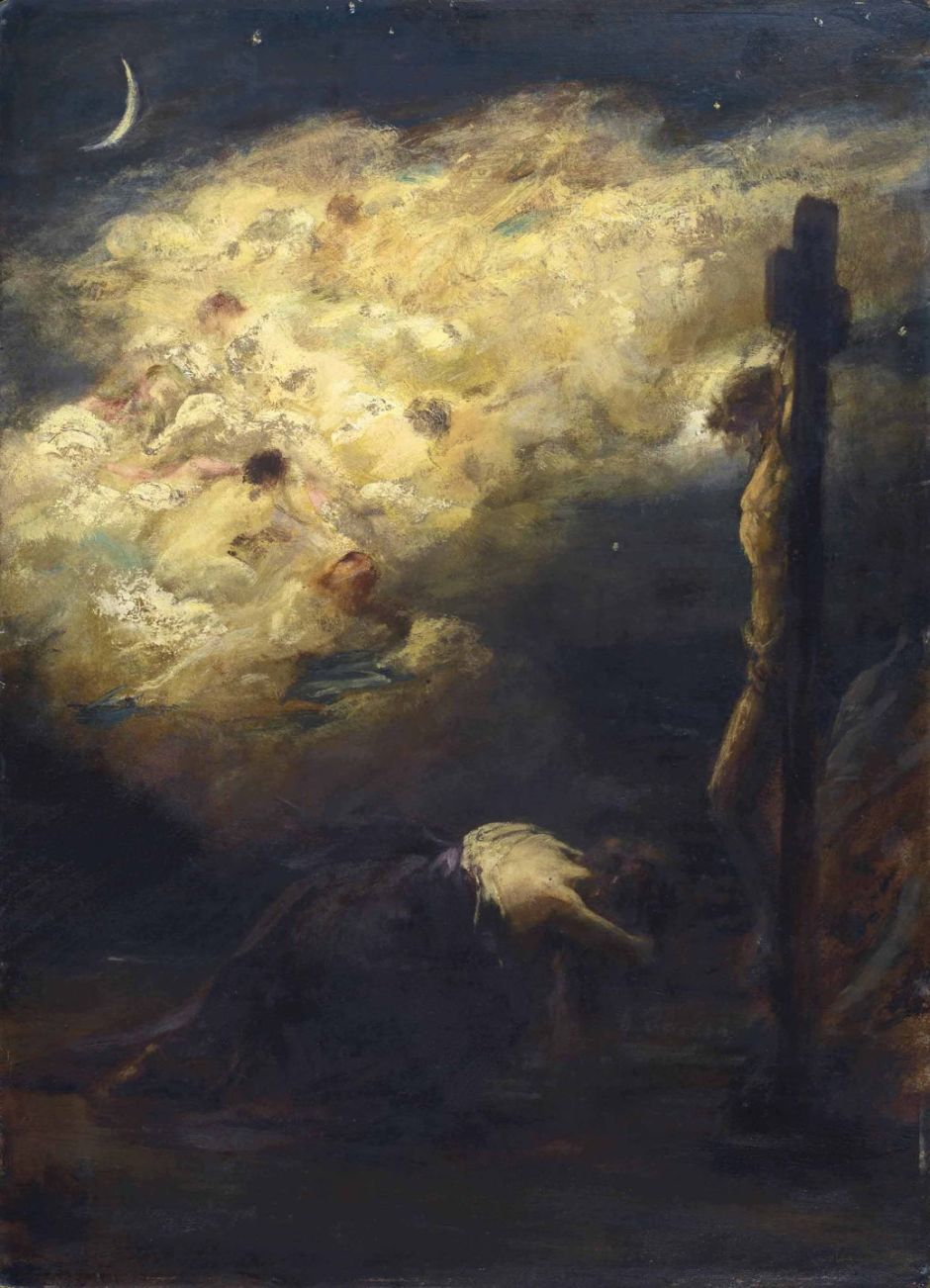
Obsession (1898) is another unusual work, which shows a woman in contemporary dress collapsed in grief at the foot of the Crucifixion. In the sky behind is a cloud containing indistinct figures.
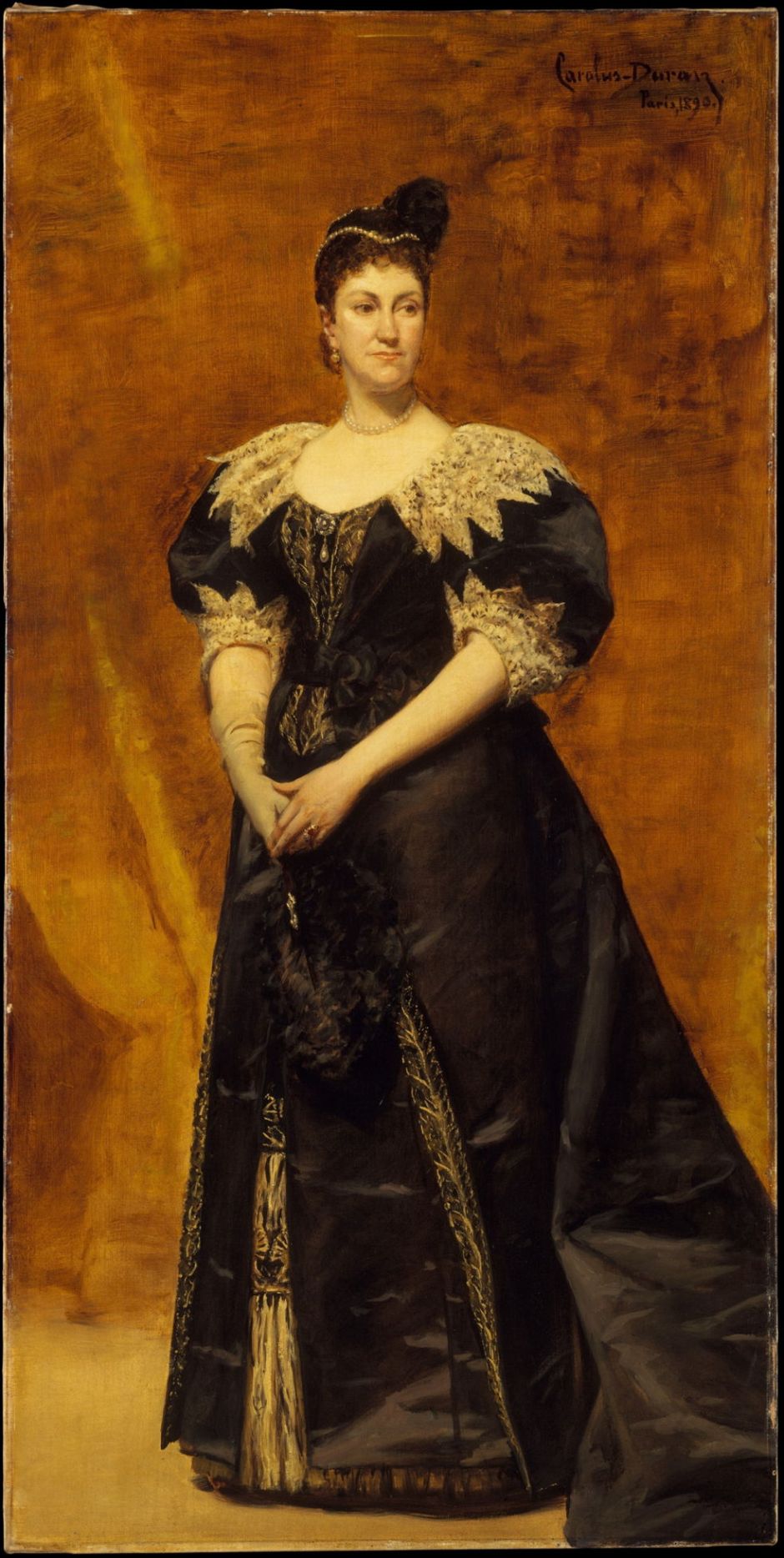
Portrait of Mrs. William Astor (1890) shows Caroline Webster ‘Lina’ Schermerhorn (1830–1908), who married the businessman William Backhouse Astor, Jr., (1829-1892). She apparently reigned over New York and Newport society, being known simply as “the Mrs Astor”.
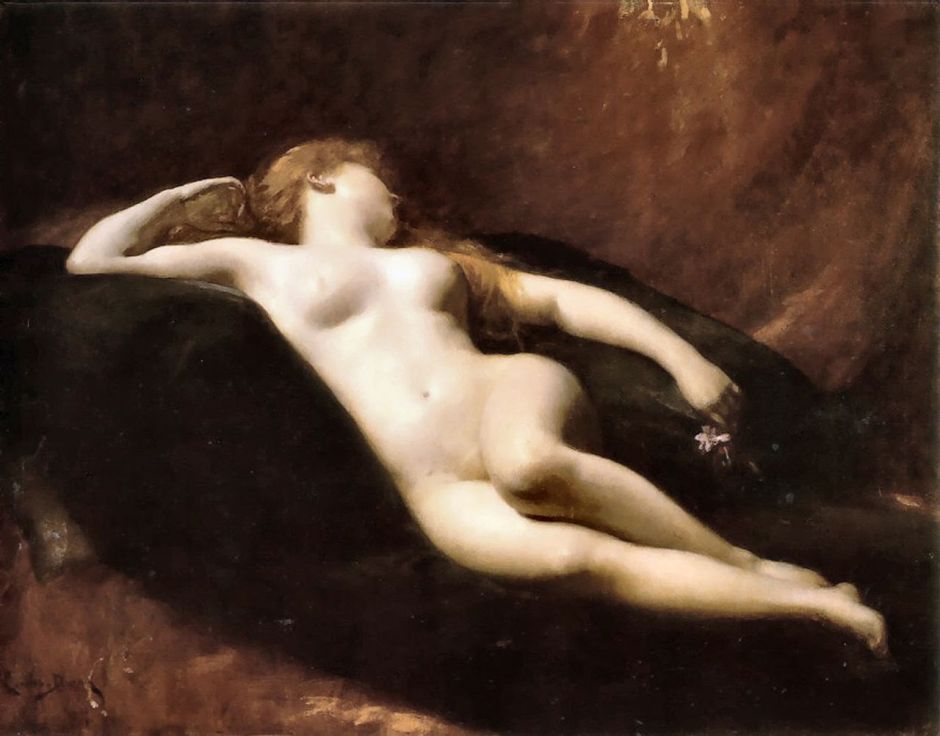
Danae (c 1900) is a beautifully simple painting of a favourite story from Greek mythology, of Danaë and the Golden Shower. The mother of Perseus, she was impregnated by Zeus who ‘appeared’ in the form of a shower of gold, which made her pregnant. Her father wanted male heirs, but wanted to keep his daughter childless, so he confined her to a tomb-like bronze chamber in his palace. With a skylight as its only source of light and air, when Zeus lusted after her, his only means of doing so was to descend on her in the form of golden rain. This is seen falling from the upper edge of the painting.

I do not have a date for Carolus-Duran’s painting of Hebe, the Greek goddess of youth. The daughter of Zeus and Hera, her attributes include a wine cup, the eagle, ivy, and the fountain of youth. The artist shows her almost wing-walking on a huge eagle, while pouring wine into a cup held in her left hand.
In 1904, Carolus-Duran was elected a member of the Académie des Beaux-Arts, and appointed Director of the Académie de France in Rome, a post which he held until 1913.
He died in Paris on 17 February 1917. His most famous pupil had been John Singer Sargent, but among his others were Theodore Robinson, Maximilien Luce, James Carroll Beckwith, and Paul Helleu. He was a fine artist, and an even greater teacher, whose pupils have certainly left their mark.
Reference

